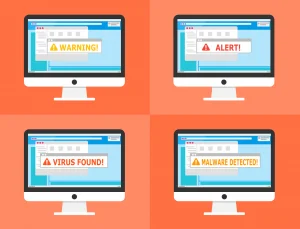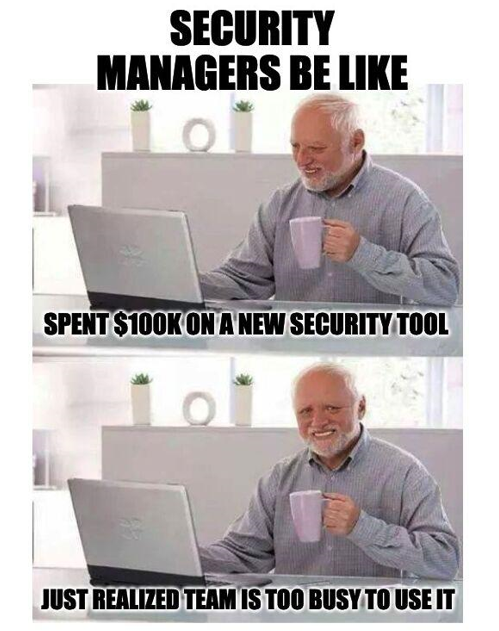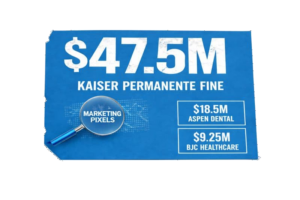What is Software Security Assurance and Why You Should Care

With businesses today using an average of 200 applications, it’s no stretch to say that software’s predictable and secure functioning is central to smooth business operations. Weak software security can bring critical business services offline or lead to stolen sensitive data. To take one pertinent example, blockchain startup MonoX lost $31 million in 2021 due to a bug in the software it used to draft smart contracts.
As an executive responsible for security or technology, one of your most important tasks in today’s software-driven world is ensuring your business uses secure software. You need assurance that both the custom apps coded in-house and third-party applications sourced from outside the business function as they should, securely. Enter the concept of software security assurance—read on to learn what software security assurance is and why you should care.
Software Security Assurance in a nutshell
Software security assurance (SSA) is an approach to designing, building, and implementing software that addresses security needs from the ground up. Transparency is critical with SSA because it provides a high level of trust that an application performs as intended without any unexpected functions that could lead to security compromises.
The benefits of SSA extend from the companies that develop software to the end users of that software. When procuring a third-party application, SSA provides a level of assurance that you’re getting code built from the ground up with security in mind.
Today’s digitally-powered businesses often depend on the integration of multiple software components, and poor security in any one of these components could either bring the store offline or put customer data at risk (see SolarWinds). Consider how an eCommerce company depends on a website, an online store, analytics, CRM software, inventory management software, and more.
For software-led businesses that sell software to other companies or users, SSA increases trust in your code. And, when coding custom web applications in-house for your own company’s use, SSA can significantly reduce the likelihood of breaches or compromises from basic security mistakes.
It’s important not to confuse the concept of SSA with the popular idea of shifting security to the left. Shift left security mostly focuses on moving security checks and tests to earlier phases of the development cycle.
SSA, however, is an entire secure-by-design ethos that evaluates security concerns based on the tasks that the software is designed for, the data it will handle, and the vulnerabilities that could be present.
Software security assurance also differs from quality assurance in that the latter is all about ensuring software engineering processes meet defined policies and standards, usually through testing. Security assurance, on the other hand, is all about making sure that software conforms to its security requirements and doesn’t include any functionality that could compromise security.
How Software Security Assurance works
Three common techniques that companies use to ensure software security include:
1. Security by design
Security by design principles are central to SSA. These principles start with the idea of establishing the context by determining all the elements that compromise an application and its desired functionalities. From here, the code is written in a way that makes both compromise (e.g., malware or injection) and disruption (denial of service) as difficult as possible. Security design also puts in place safeguards that prevent lateral movement and make it easier to detect any compromises.
2. Continuous reviews
With modern development practices driven by DevOps approaches, frequent updates are made to add new software functionality. This makes software security assurance an ongoing process. With any new patch or update, development teams need to evaluate changing security needs based on the dynamic nature of their software.
3. Penetration testing
Sometimes, vulnerabilities or weaknesses exist within code and are hard to identify without expert opinions. Penetration testing before release provides an additional guarantee of security by simulating a cyber attack on an application and probing for any potentially exploitable weaknesses.
The responsibility ultimately lies with the CISO to ensure flawed software isn’t used or deployed within their company. But different parties can ultimately combine to make assurance assessments. The software vendor itself can assess security and be transparent about results. The company procuring an app can conduct its own technical assessments, while third-party assessments from independent testing labs or government-approved labs provide an added security assurance evaluation.
Since security assurance is ultimately subjective, it should encompass multiple methods of evaluation, including the development methods used, the security architecture of the app, the results of security tests carried out, and the reputation of the vendor if the app is from a third party.
More reasons to care about SSA
SSA helps to protect your clients and users from hackers
One of the main benefits of SSA is to protect the clients and users that are ultimately most at risk when they use software that isn’t secure. SSA protects against malware, injections, brute force hacks, and other cyber threats so that intended users (whether customers or business partners) can be confident in a given application. SSA is also important in getting buy-in from other departments and users when software is used for internal purposes.
SSA helps you to adopt a security by design approach
Any modern software development company needs to be prioritizing security from the earliest stages of development. Today’s cyber threat landscape is defined by increasingly sophisticated threats and threat actors targeting code weaknesses, particularly in Internet-exposed web applications. Security by design helps businesses deploy the important apps they depend on confidently, without fear of exposure to vulnerabilities.
SSA helps you to launch successful software
Reputation is everything to companies that launch software and sell it to other businesses or customers. Creating the perfect application that meets a market need is not enough; security at launch is imperative in a fast-paced digital world. That’s why penetration testing is so important in SSA by going the extra mile to ensure applications have been vetted for even the most complex vulnerabilities.
SSA helps to ensure that your product (and company) can scale
The repercussions of security issues in software become more severe as both the application and vendor scale. An application that starts out with a niche user group in one specific region could scale to a more global level, where different data security regulations and customer-demanded reports (e.g., SOC) may mandate more robust security requirements. Prioritizing security during application planning can account for and help the app scale by considering security needs from the outset and putting in place the measures that will facilitate growth without introducing extra risks.
Navigating a Software-Reliant World
There’s no getting around the fact that most businesses operate in a software-reliant world. Multiple applications help businesses excel, and many of these apps (even in-house apps) involve external code that can result in third-party risks. SSA is one way of several to protect against third-party risks, but dedicated third-party risk management solutions can also prove useful in a complex ecosystem of external code.
Effective software security should combine approaches like SSA with dedicated third-party risk management processes. Third-party risk monitoring (TPRM) solutions can help to defend against evolving and emerging risks from external parties over which you lack direct control. Learn more about vendor risk management today.
Subscribe to our newsletter
Stay updated with the latest news, articles, and insights from Reflectiz.
Related Articles
Your Website looks great!
But what’s happening behind the scenes?
Discover your website blind spots and vulnerabilities before it’s too late!










![5 Threats That Reshaped Web Security This Year [2025]](https://www.reflectiz.com/wp-content/uploads/2025/12/5THREATS-300x156.jpg)